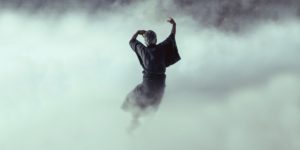The Evidence for Reincarnation:
Scientifically Documented True Stories That Prove Past Lives Are Real
BY ERVIN LASZLO & ANTHONY PEAKE
 reincarnation proof is surprisingly easy to come by due to the mountains of evidence that exist: thousands of documented and well-researched cases worldwide have been collected by researchers over the last century.
reincarnation proof is surprisingly easy to come by due to the mountains of evidence that exist: thousands of documented and well-researched cases worldwide have been collected by researchers over the last century.
Reincarnation Experiences
There is evidence that at least some, and possibly all, people have previously existed in another body and lived another existence. When anomalous “memories” appear as personal recollections, those who experience them tend to believe that they stem from their own previous life. However, the memories that surface in consciousness are not likely to be past-life recollections.
Instead, they appear to be “experiences of the reincarnation-type.” The latter are widespread as well. Stories suggestive of reincarnation are not limited, whether geographically or culturally. They occur in all corners of the planet and among people of all cultures.There is of course more to reincarnation than memories. For reincarnation to have actually taken place the consciousness of the foreign personality must have entered the body of the experiencing subject. In esoteric literature this is known as the transmigration of the spirit or soul. It is said to occur in the womb, perhaps already at conception or shortly afterward, when the rhythmic pulses begin that develop into the heart of the embryo.
The spirit or soul of an individual does not necessarily migrate to another individual. Buddhist teachings, for example, tell us that the soul or spirit does not always reincarnate on the earthly plane and in a human form. It may not reincarnate at all, evolving to a spiritual domain from where it either does not return or returns only to fulfill a task it was to accomplish in its preceding incarnation.
But what concerns us here is the possibility that reincarnation could truly occur. Can the consciousness that was the consciousness of a living person reappear in the consciousness of another? In his book The Power Within, British psychiatrist Alexander Cannon wrote that the evidence on this score is too strong to be dismissed:
For years the theory of reincarnation was a nightmare to me and I did my best to disprove it and even argued with my trance subjects to the effect that they were talking nonsense. Yet as the years went by one subject after another told me the same story in spite of different and varied conscious beliefs. Now well over a thousand cases have been so investigated and I have to admit that there is such a thing as reincarnation.
Variations and Variables in Reincarnation-Type Experiences
Perhaps the main variable is the age of the person who has a reincarnation-type experience. Those who do are mostly children between the ages of two and six. After the age of eight the experiences tend to fade and, with few exceptions, vanish entirely in adolescence.
The manner in which the reincarnated personality has died is yet another variable. Those who suffered a violent death seem to be more frequently reincarnated than those who died in a natural way.Reincarnation stories tend to be clear and distinct in children, whereas in adults they are mostly indistinct, appearing as vague hunches and impressions. The more widespread among them are the déjà vu: recognizing a site or a happening one sees for the first time as familiar. The sensation of déjà connu, encountering a person for the first time with a sense of having known him or her before, also occurs, but less frequently.
Whether reincarnation stories convey verifiable information, evidence and proof about places, people, and events has been tested in reference to eyewitness testimonies and birth and residence certificates. The experiences often turn out to be corroborated by witnesses as well as by documents. Sometimes even minute details correspond to real events, persons, and sites.
Vivid reincarnation stories are accompanied by corresponding patterns of behavior. Behaviors suggestive of the reincarnated personality appear even when that personality was of a different generation and a different gender. A young child could manifest the values and behaviors of an elderly person of the opposite sex from the past life.
The pioneering research on recent reincarnation stories is the work of Ian Stevenson, a Canadian-American psychiatrist who worked at the University of Virginia School of Medicine. During more than four decades, Stevenson investigated the reincarnation-type experiences of thousands of children, both in the West and in the East. Some of the past life memories recounted by the children have been verified as the experience of a person who had lived previously, and whose death matched the impressions reported by the child. Sometimes the child carried a birthmark associated with the death of the person with whom he or she identified, such as an indentation or discoloration on the part of the body where a fatal bullet entered, or a malformation on a hand or the foot the deceased had lost.
In a path-breaking essay published in 1958, “The Evidence for Survival from Claimed Memories of Former Incarnations,” Stevenson analyzed the evidence from reincarnation stories of children and presented narratives on seven of the cases. These past life cases turned out to be verifiable, with the incidents recounted by the children recorded in often obscure local journals and articles.
The Proof of Reincarnation: Stories of First Hand Experiences
Reincarnation Story 1: The Case of Ma Tin Aung Myo
A case reported by Stevenson involved a Burmese girl called Ma Tin Aung Myo. She claimed to be the reincarnation of a Japanese soldier killed during the Second World War. The case spans huge cultural differences between the person reporting the experiences and the individual whose experiences she reports.
In 1942 Burma was under Japanese occupation. The Allies regularly bombed the Japanese supply lines, particularly the railways. The village of Na-Thul was no exception, being close to the important railway station at Puang. Regular attacks made life very hard for the villagers, who were trying their best to survive. Indeed, survival meant getting along with the Japanese occupiers. For villager Daw Aye Tin (who was later to be the mother of Ma Tin Aung Myo) this meant discussing the relative merits of Burmese and Japanese food with the stocky, regularly bare-chested Japanese army cook who was stationed in the village.The war ended, and life returned to a semblance of normality. In early 1953 Daw found herself pregnant with her fourth child. The pregnancy was normal, with the odd exception of a reoccurring dream in which the Japanese cook, with whom she had long lost contact, would follow her and announce that he was coming to stay with her family. On December 26, 1953, Daw gave birth to a daughter and called her Ma Tin Aung Myo. The baby was perfect with one small exception: a thumb-sized birthmark on her groin.
As the child grew up it was noted that she had a great fear of aircraft. Every time one flew overhead she would become agitated and cry. Her father, U Aye Maung, was intrigued by this, as the war had been over many years and aircraft were now simply machines of transport rather than weapons of war. It was therefore strange that Ma was afraid that the aircraft would shoot at her. The child became more and more morose, stating that she wanted to “go home.” Later “home” became more specific; she wanted to return to Japan. When asked why this was the case, she stated that she had memories of being a Japanese soldier based in Na-Thul. She knew that she had been killed by machine-gun fire from an aircraft, and this is why she feared airplanes so much.
As Ma Tin Aung Myo grew older she accessed more past life memories of the life of her previous personality. She was later to tell Ian Stevenson that she remembered that the previous personality came from Northern Japan and that he had five children, the eldest being a boy, and that he had been an army cook. From then on the past life memories became more precise. She remembered that she (as the Japanese soldier) was near a pile of firewood next to an acacia tree. She described wearing short pants and no shirt. An Allied aircraft spotted him and strafed the area around him. He ran for cover: as he did so, he was hit by a bullet in the groin, which killed him instantly. She described the plane as having two tails. This was later identified as substantial reincarnation evidence, being a Lockheed P-38 Lightning, an aircraft used by the Allies in the Burma campaign.
In her teens Ma Tin Aung Myo showed distinct masculine traits. She cropped her hair short and refused to wear female clothing.
Between 1972 and 1975 Ma Tin Aung Myo was interviewed three times about her reincarnation memories by Ian Stevenson. She explained that she wanted to be married to a woman and had a steady girlfriend. She said that she did not like the hot climate of Burma nor its spicy food. She much preferred highly sweetened curry dishes. When she was younger she loved to eat semi-raw fish, only losing this preference when a fish bone stuck in her throat.Reincarnation Story 2: Paddy Fields Tragedy
Stevenson described how a Sri Lankan girl remembered a past life in which she had drowned in a flooded paddy field. She described that a bus had driven past and splashed her with water just before she died. Subsequent research searching for the proof of this reincarnation found that a girl in a nearby village had drowned after she had stepped back to avoid a passing bus while walking on a narrow road above flooded paddy fields. She fell backward into deep water and died. The girl who manifested this experience had, from a very early age, shown an irrational fear of buses; she would also get hysterical if taken near deep water. She had a fondness for bread and had a liking for sweet food. This was unusual, in that her family did not like either. However, the previous personality was noted for both of these preferences.
Reincarnation Story 3: The Case of Swarnlata Mishra
Another typical Stevenson case was that of Swarnlata Mishra, born in a small village in Madhya Pradesh in 1948. When she was three years old she began having spontaneous past-life memories of being a girl called Biya Pathak, who lived in a village more than a hundred miles away. She described that the house Biya lived in had four rooms and was painted white.
She began to sing songs that she claimed she used to know, together with complex dance routines that were unknown to her present family and friends. Six years later she recognized some people who had been her friends in the past life. This stimulated her father to start writing down what she said and searching for proof of her reincarnation.
Her case generated interest outside of the village. One investigator who visited the city discovered that a woman who matched the description given by Swarnlata had died nine years previously. Investigations subsequently confirmed that a young girl called Biya had lived in just such a house in that town.
Swarnlata’s father decided to take his daughter to the town and to have her introduced to members of Biya’s family. As a test to see if she indeed was a reincarnated personality, the family introduced people who were not related to the child. Swarnlata immediately identified these individuals as being imposters. Indeed some details of her past life memories were so precise that all were amazed.
Reincarnation Story 4: Patrick Christenson and His Brother
One case offering substantial reincarnation proof was that of Patrick Christenson, who was born by cesarean section in Michigan in March 1991. His elder brother, Kevin, had died of cancer twelve years earlier at the age of two. Early evidence of Kevin’s cancer was presented six months prior to his death when he began to walk and had a noticeable limp. One day he fell and broke his leg. Tests were done, and after a biopsy on a small nodule in his scalp, just above his right ear, it was discovered that little Kevin had metastatic cancer. Soon tumors were found growing in other locations in his body. One such growth caused his eye to protrude and eventually resulted in blindness in that eye. Kevin was given chemotherapy, which resulted in scars on the right-hand side of his neck. He eventually died of his illness, three weeks after his second birthday.
At birth Patrick had a slanting birthmark with the appearance of a small cut on the right side of his neck, exactly the same location as Kevin’s chemotherapy scar, showing startling evidence of reincarnation. He also had a nodule on his scalp just above his right ear and a clouding of his left eye, which was diagnosed as a corneal leukoma. When he began to walk it was with a distinct limp, again, offering further proof of reincarnation.
When he was almost four and a half he said to his mother that he wanted to go back to his old orange and brown house. This was the exact coloring of the house in which the family had lived in 1979 when Kevin was alive. He then asked if she remembered him having surgery. She replied that she could not because this had never happened to him. Patrick then pointed to a place just above his right ear. He added that he didn’t remember the actual operation because he was asleep, which was consistent with details of Kevin’s past life.
Reincarnation Story 5: Ancestral Memories of Sam Taylor
Another case offering substantial proof of reincarnation involved an eighteen-month-old boy called Sam Taylor. As his diaper was being changed he looked up at his father and said, “When I was your age I used to change your diapers.” Later Sam disclosed details about his grandfather’s life that were completely accurate. He said that his grandfather’s sister had been murdered and that his grandmother had made milkshakes for his grandfather using a food processor. Sam’s parents were adamant that none of these subjects had been discussed in his presence. When he was four years old, Sam was shown a group of old family pictures spread out on a table. Sam happily identified his grandfather every time with the announcement, “That’s me!” In an attempt to test him, his mother selected an old school class photograph showing the grandfather as a young boy. There were sixteen other boys in the photograph. Sam immediately pointed to one of them, once again announcing that that was him. He was right.
What the Evidence Tells Us
Reincarnation-type experiences can be vivid and convincing to the extent that they appear to be testimony and evidence that a previously living personality has been incarnated in the subject. This belief is strengthened by the observation that birthmarks on the body of the subject correspond to the bodily features of the person whom he or she seems to incarnate. This is most strikingly the case when the past life personality suffered bodily injury. The corresponding marks or deformations sometimes reappear in the subject, seeming to offer proof that reincarnation is indeed occurring.
Many observers of this phenomenon, including Stevenson himself, held that matching birthmarks are significant evidence for reincarnation. However, the coincidence of birthmarks and other bodily features in a child with the fate of a previously existing person is not necessarily assurance that that person is reincarnated in the child. It could also be that the brain and body of the child with the given birthmarks and bodily features are especially adapted to recall the experience of a personality with analogous birthmarks and deformities.
This piece on reincarnation is excerpted from The Immortal Mind: Science and the Continuity of Consciousness beyond the Brain by Ervin Laszlo and contributor Anthony Peake with permission from the publisher Inner Traditions International. InnerTraditions.com
About The Author
Ervin Laszlo is a systems scientist, integral theorist, and classical pianist. Twice nominated for the Nobel Peace Prize, he is the founder and president of the international think tank the Club of Budapest as well as the Ervin Laszlo Center for Advanced Study. He lives in Tuscany. Anthony Peake is a writer, researcher, and author of 7 books, including Making Sense of Near-Death Experiences, which received a “highly commended” award from the British Medical Association. He lives in Crawley, West Sussex, U.K. ervinlaszlo.com
Anthony Peake (born 1954) grew up on the Wirral, near Liverpool, England. He was educated at Wirral Grammar School, Warwick University and the London School of Economics. He is a member of the Institute of Noetic Sciences, The Scientific & Medical Network and the Society for Psychic Research. He has been interviewed by many radio stations and magazines across the world and has appeared on British television. He is also developing a reputation as an engaging and dynamic public speaker having now presented over 100 lectures across the UK, Europe and the USA. anthonypeake.com























